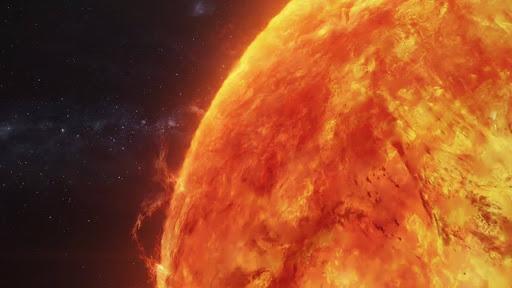
‘Peacock Jets’ on Sun Linked to Magnetic Flux Cancellation
The Sun, our star, is a dynamic and fascinating celestial body that has been the subject of intense study for centuries. From sunspots to solar flares, the Sun’s behavior can have a significant impact on our planet and our technology. Recently, scientists have made a groundbreaking discovery about the Sun’s lower atmosphere, revealing the presence of “peacock jets” – recurrent fan-shaped eruptions that have been a mystery until now.
These “peacock jets” are a type of solar jet, which are fast-moving streams of hot, ionized gas that originate from the Sun’s surface. They are characterized by their unique fan-shaped or peacock-like appearance, with a bright, hot core and a surrounding cooler, denser shell. Solar jets are thought to play a crucial role in the Sun’s magnetic field, which is responsible for the Sun’s overall energy output and the solar wind that affects our planet.
So, what causes these “peacock jets”? Scientists have long suspected that they are related to the Sun’s magnetic field, but the exact mechanism was unknown. Recent research has shed new light on this phenomenon, revealing that “peacock jets” are powered by magnetic flux cancellation.
Magnetic Flux Cancellation: The Key to Understanding Peacock Jets
Magnetic flux cancellation is a process in which opposing magnetic fields cancel each other out, releasing a vast amount of energy in the process. This energy release can take many forms, including solar flares and coronal mass ejections, which can have a significant impact on our planet.
In the case of “peacock jets,” magnetic flux cancellation occurs when two magnetic fields with opposite polarities collide and cancel each other out. This collision triggers a sudden release of energy, which heats up the surrounding plasma and causes it to expand rapidly, creating the characteristic fan-shaped structure of a “peacock jet.”
The Discovery: A Breakthrough in Understanding Solar Dynamics
The discovery of the link between “peacock jets” and magnetic flux cancellation is a major breakthrough in our understanding of solar dynamics. By studying these jets, scientists can gain valuable insights into the complex interactions that occur within the Sun’s lower atmosphere, including the Sun’s magnetic field and the solar wind.
This deeper understanding of solar dynamics is crucial for predicting space weather, which is a significant concern for our technology. Space weather refers to the dynamic and variable conditions in the Sun’s plasma, which can affect our planet’s magnetic field and potentially disrupt our communication and navigation systems.
Implications for Space Weather Prediction
The discovery of the link between “peacock jets” and magnetic flux cancellation has significant implications for space weather prediction. By studying these jets, scientists can gain a better understanding of the complex interactions that occur within the Sun’s lower atmosphere, which can help them predict space weather events more accurately.
This is particularly important for our technology, as space weather can have a significant impact on our communication and navigation systems. For example, solar flares and coronal mass ejections can cause radio blackouts and disrupt satellite communications, while geomagnetically induced currents can damage power grids and other critical infrastructure.
Conclusion
The discovery of the link between “peacock jets” and magnetic flux cancellation is a major breakthrough in our understanding of solar dynamics. By studying these jets, scientists can gain valuable insights into the complex interactions that occur within the Sun’s lower atmosphere, including the Sun’s magnetic field and the solar wind.
This deeper understanding of solar dynamics is crucial for predicting space weather, which is a significant concern for our technology. By improving our understanding of space weather, we can better prepare for and mitigate its impacts, ensuring the continued reliable operation of our communication and navigation systems.
Reference:






